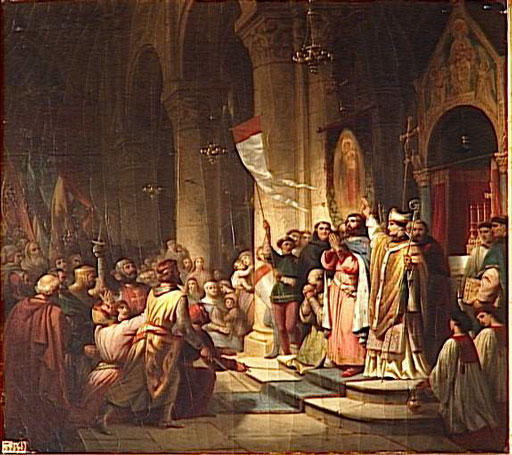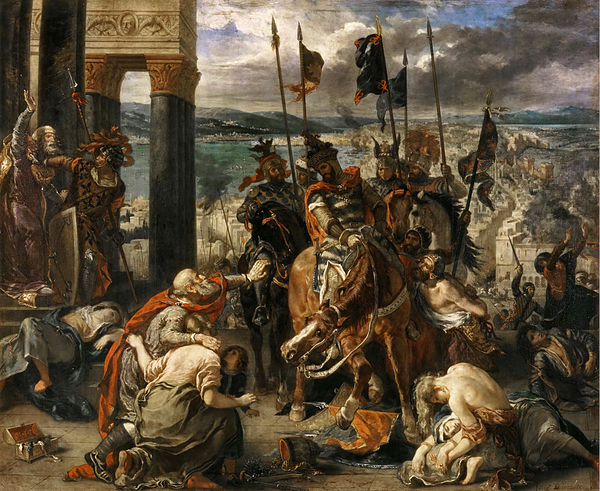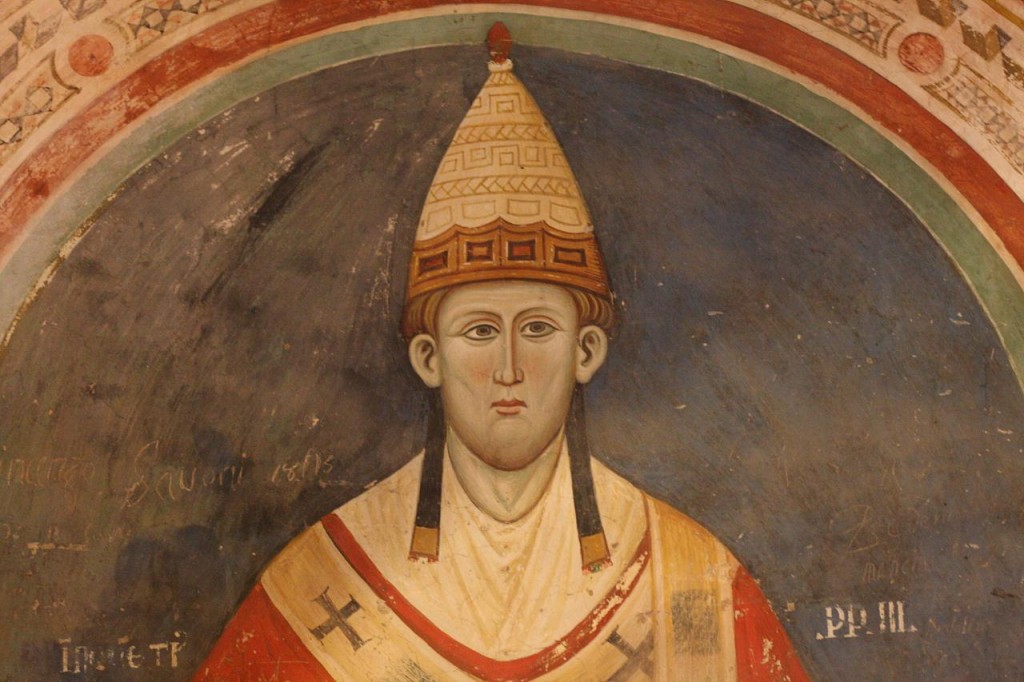By Dimitris Topalis,
Things that lead to the call for the Fourth Crusade
Although the Third Crusade (1187-1192) achieved some notable military success, it failed its original goal of recapturing the Holy Land of Jerusalem from the Muslim Sultan of Egypt and Syria, Saladin (1174-1193). On the 4th of March 1193, Saladin died of fever but the Holy City remained in Muslim hands. So, the feeling of need for a new crusade was sparked once again. Thus, Pope Innocent III called for the Fourth Crusade in August 1198 (1198-1216). Innocent III promised that those who would fight in the Crusade would receive remission for their sins.
However, there was one problem: the timing was not the best, because the holy city was in the hands of the Muslims, since 1187. Furthermore, in the final years of the 12th century, all four monarchs of Europe’s most powerful kingdoms, England, Spain, France, Germany, were busy with internal affairs –in the case of England and France, serious territorial squabbles with each other. Even worse, in April 1199, the great crusader king Richard Lionheart, who had promised to return to Jerusalem and finish his undone work during the Third Crusade, died on a campaign in France. The Third Crusade was also named the King’s Crusade, but the Fourth Crusade was not going to be like the Third. The Fourth Crusade’s interest was shown from a number of second-tier nobles, who wanted to be a part of it.
The leader of the Fourth Crusade and the departure of the Crusader Army
At first, the leadership of the Fourth Crusade was given to the count of Champagne Theobald III in 1199, who died in the year 1201, and then the leadership was given to Boniface I Marquis of Montferrat. In the year 1202, the Crusaders were set to sail from Venice to Egypt, but the Crusaders stroke a deal: in order to have a safe passage, they would stop off at Zara on the Dalmatian coast and reconquer it for the Italians. The city had recently defected to the Hungarians. The Venetians would provide 50 warships for the Crusade at their own cost and receive half of any territory conquered. The Pope was not pleased to hear the news that Christian Zara had been conquered on 24 November 1202, and he promptly excommunicated the Crusaders and the Venetians. The ban was later lifted because otherwise, they would not have been much use for the Crusaders.

The new objective of the Fourth Crusade
At first, the Fourth Crusade had the objective of finishing the job that the Third failed to do, recapture the Holy Land of Jerusalem. The objective of the new Crusade was changed, however. Instead of reclaiming the Holy Land, the Crusaders changed their goal to conquering Constantinople. The main reason for that change was old at that time doge of the Republic of Venice Enrico Dandolo, who lit up a fire of mutual suspicions between the western powers and the Byzantine Empire. The motives of Enrico Dangolo were that he intended to win the Venetian domination of trade in the East, plus the Pope would achieve supremacy for the Western Church once and for all against the Eastern Church. This seemed as good an opportunity as ever to install a new sympathetic emperor of Byzantium. Alexios IV Angelos (1203-1204), whose father Isaac II Angelos had been deposed as emperor seven years earlier, had been touting for western support for some time. This would permit Venice to get several steps ahead of long-time trade rivals Pisa and Genoa in cornering the trade market within the Byzantine Empire. Meanwhile, the Crusader Knights would not only gain revenge on the Byzantine Empire for their unhelpful support of previous Crusades but also surely pick up glory and loot.

The capture of Constantinople
In order to capture Constantinople, the Crusaders’ first move was to put their own supporters on the throne of the Byzantine Empire, Alexios IV Angelos, alongside his father, Isaac II Angelos. The Crusaders realized that Alexios was lying to them. His father and he were unpopular with the Byzantines mainly because of the propaganda of their previous successor against them. The throne ended up in the hands of Alexios V Doukas, who promised to defend the city at all costs against the Crusaders. After that, he strengthened Constantinople’s walls, the towers were heightened and he made several raids against the Crusaders’ camps. The Crusaders were in a bad spot because their supplies were getting low, their diplomatic avenues were exhausted, and their ships needed repairs. That did not stop them from launching an all-out attack on 9 April 1204, but the Byzantines repelled it. Then, on 12 April, the Crusaders attacked the weaker sea walls of the harbor and targeted two towers in particular by lashing their ships together and ramming them repeatedly. Initially, the defenders held on but eventually, the attackers forced their way through on both the seaside and the land side, the attackers smashing through the city’s gates. What followed was the slaughter of the defenders and the city’s 400,000 inhabitants.
The aftermath of the Fourth Crusade
The events that followed the capture of Constantinople had a huge impact on the future of the Byzantine kingdom. The Crusaders spitted the land of the Byzantine empire into states and smaller states between them. The Venetians took three-eighths of Constantinople, the Ionian Islands, Crete, Euboea, Andros, Naxos, and a few strategic points along the coast of the Sea of Marmara. On 9 May 1204 CE, Count Baldwin of Flanders was made the first Latin Emperor of Constantinople and crowned in the Hagia Sophia, receiving five-eighths of Constantinople and lands which included Thrace, northwest Asia Minor, and several Aegean islands. Boniface of Montferrat took over Thessalonica and formed a new kingdom there. In 1261, the empire of Nicaea, the center of the Byzantines in exile, would retake control of Constantinople from the Crusaders, but the Byzantine Empire would be a shadow of its former self.
References
- The Latin kingdom of Cyprus and the Crusades 1191-1374, Peter W. Edbury, ed. Dimitris Papadimas (p.20, 38, 40, 85, 98,100).
- Historical Monographs 2. The western empire and the Latin kingdom of Thessaloniki, Michael B. Bellas (p.160-162,165).




